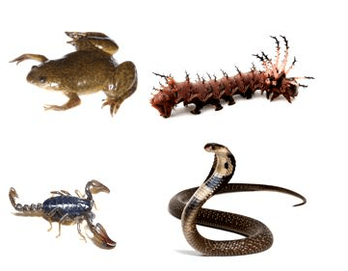POTENTIAL ANIMAL POISONS FOR DEVELOPMENT OF ANTIVIRAL THERAPEUTICS
Keywords:
Animal sources, antiviral compounds, natural therapeutics, SARS-CoV-2Abstract
Recent serious effects of viral infections on humans, anti-viral compound research has gained momentum and has become very important. In particular, viruses such as Cytomegalovirus/CMV, Epstein Barr virus/EBV, Hepatitis B/HBV, Hepatitis C/HCV, Herpes Simplex Virus/HSV, Human Immunodeficiency Virus/HIV, rabies virus, corona virus and Ebola virus are of high importance. Very limited antiviral medicines commercially available and can cause serious-significant side effects for patients receiving treatment. Also, viruses have the mutational capability to infect host cells. For this reason, in recent years, the possibility of producing new antiviral medicines, especially from natural sources, has increased considerably, and animal-based products are now also promising among natural products. Viral-borne infections have been known long ago. However, it was just possible to isolate these viruses that cause infection in the nineteenth century. The management of viral infection, the isolation of the virus, and the control of viral reproduction has played a role in the development of many drugs and vaccines in the studies carried out since that period. In addition to these studies, viruses continue to be one of the primary causes of human and animal diseases today. It has been stated that Antiviral Peptides/AVPs can be used as a defense barrier with previous studies. Some AVPs are known to show a broad spectrum against viruses. In this direction, many studies have been conducted on AVPs and it has been observed that these peptides inhibit the viral particle by the above-mentioned mechanisms. In this study venoms and toxins of some animals, which have antiviral activities are overviewed.

Peer Review History:
Received 2 February 2021; Revised 7 March; Accepted 10 April; Available online 15 May 2021
Academic Editor: Dr. DANIYAN Oluwatoyin Michael , Obafemi Awolowo University, ILE-IFE, Nigeria, toyinpharm@gmail.com
, Obafemi Awolowo University, ILE-IFE, Nigeria, toyinpharm@gmail.com
Reviewer(s) detail:
Dr. Asia Selman Abdullah , Al-Razi university, Department of Pharmacy, Yemen, asia_abdullah65@yahoo.com
, Al-Razi university, Department of Pharmacy, Yemen, asia_abdullah65@yahoo.com
Dr. Nuray Arı , Ankara University, Turkiye, ari@ankara.edu.tr
, Ankara University, Turkiye, ari@ankara.edu.tr
Dr. Terhemen Festus Swem , Department of Veterinary Physiology and Biochemistry, College of Veterinary Medicine, Federal University of Agriculture, Makurdi, Benue State, Nigeria, swemfestus422@gmail.com
, Department of Veterinary Physiology and Biochemistry, College of Veterinary Medicine, Federal University of Agriculture, Makurdi, Benue State, Nigeria, swemfestus422@gmail.com
Downloads

Published
How to Cite
Issue
Section

This work is licensed under a Creative Commons Attribution-NonCommercial 4.0 International License.









 .
.